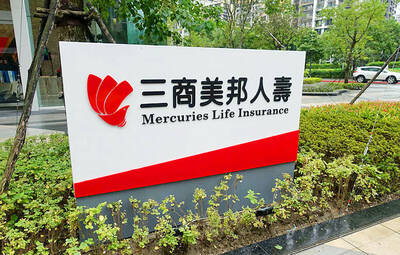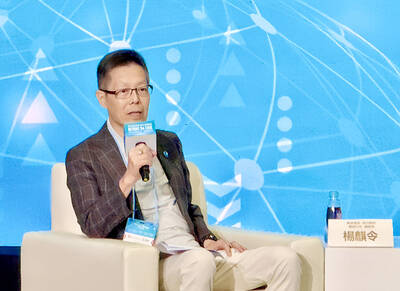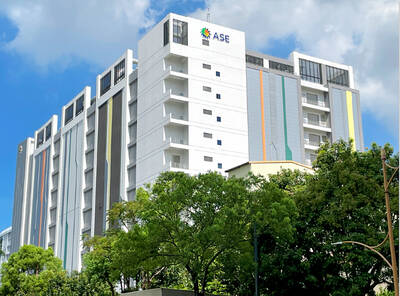Asustek Computer Inc (華碩), the world’s fifth-largest PC brand, yesterday reported that its third-quarter net profit dropped 26 percent year-on-year due to one-time tax expenses amounting to NT$1.52 billion (US$51.37 million).
Net profit last quarter grew 4 percent to NT$4.94 billion from NT$4.76 billion the previous quarter, driven by increased shipments of new tablet and notebook products, Asustek said.
However, because of increased tax expenditures, its third-quarter profit declined by a double-digit percentage from NT$6.71 billion a year ago, according to the company’s financial report.
Earnings per share (EPS) during the July-to-September period were NT$6.65, compared with NT$6.3 in the previous quarter and NT$8.92 in the same period last year.
Asustek chief executive officer Jerry Shen (沈振來) told an investors’ conference that the company plans to launch new smartphones during the Consumer Electronics Show (CES) in Las Vegas in January and new Chromebook products sometime next quarter as the traditional PC market keeps contracting.
“We remain optimistic about the desktop and laptop market, but our priority is to make the company’s smartphone business turn a profit next year,” Asustek chief financial officer David Chang (張偉明) said.
With more retail stores in China and cooperation with more tier-one telecom operators globally, Asustek aims to grow its smartphone business from about 1 million units this year to 5 million units next year, Shen said.
As for the company’s new Chromebooks, Asustek has targeted students and teachers as potential consumers for its two new models, which are tentatively priced at US$199 for a 11.6-inch model and US$249 for a 13.3-inch version.
In addition, Asustek also plans to launch wearable devices during next year’s Computex tech fair in Taipei, Shen said, without elaborating.
Currently, laptops remain Asustek’s largest source of sales with a 57 percent contribution to the company’s product portfolio, followed by tablets with a 20 percent share and motherboards with a 13 percent share.
For this quarter, Asustek forecast its laptop shipments would grow 8.88 percent to 4.9 million units from last quarter, while tablet shipments would increase 2.85 percent to 3.6 million units and motherboard shipments would drop 3.63 percent to 5.3 million units.
The company forecast an operating margin of 4 or 5 percent this quarter, compared with 4.5 percent last quarter, and it expected the figure to remain above 4 percent next year.
Looking ahead, Asustek expected notebook shipments to grow 15 percent to 21 million units for the whole of next year and tablet shipments to rise by 7 percent to 13 million units if it gets orders for Google Inc’s third-generation Nexus 7 tablet.
“We are still in talks [about the Nexus 7 orders],” Shen said.
“Our long-term competitor is China’s Lenovo Group (聯想), and we will try hard to strengthen our presence in the Chinese market to secure the company’s business,” Chang said.
Shares of Asustek closed down 1.76 percent at NT$223 yesterday.

AI BOOST: Although Taiwan’s reliance on Chinese rare earth elements is limited, it could face indirect impacts from supply issues and price volatility, an economist said DBS Bank Ltd (星展銀行) has sharply raised its forecast for Taiwan’s economic growth this year to 5.6 percent, citing stronger-than-expected exports and investment linked to artificial intelligence (AI), as it said that the current momentum could peak soon. The acceleration of the global AI race has fueled a surge in Taiwan’s AI-related capital spending and exports of information and communications technology (ICT) products, which have been key drivers of growth this year. “We have revised our GDP forecast for Taiwan upward to 5.6 percent from 4 percent, an upgrade that mainly reflects stronger-than-expected AI-related exports and investment in the third

Mercuries Life Insurance Co (三商美邦人壽) shares surged to a seven-month high this week after local media reported that E.Sun Financial Holding Co (玉山金控) had outbid CTBC Financial Holding Co (中信金控) in the financially strained insurer’s ongoing sale process. Shares of the mid-sized life insurer climbed 5.8 percent this week to NT$6.72, extending a nearly 18 percent rally over the past month, as investors bet on the likelihood of an impending takeover. The final round of bidding closed on Thursday, marking a critical step in the 32-year-old insurer’s search for a buyer after years of struggling to meet capital adequacy requirements. Local media reports

TECHNOLOGICAL RIVALRY: The artificial intelligence chip competition among multiple players would likely intensify over the next two years, a Quanta official said Quanta Computer Inc (廣達), which makes servers and laptops on a contract basis, yesterday said its shipments of artificial intelligence (AI) servers powered by Nvidia Corp’s GB300 chips have increased steadily since last month, should surpass those of the GB200 models this quarter. The production of GB300 servers has gone much more smoothly than that of the GB200, with shipments projected to increase sharply next month, Quanta executive vice president Mike Yang (楊麒令) said on the sidelines of a technology forum in Taipei. While orders for GB200 servers gradually decrease, the production transition between the two server models has been

ASE Technology Holding Co (日月光投控), the world’s largest integrated circuit (IC) packaging and testing supplier, yesterday announced a strategic collaboration with Analog Devices Inc (ADI), coupled with the signing of a binding memorandum of understanding. Under the agreement, ASE intends to purchase 100 percent shares of Analog Devices Sdn Bhd and acquire its manufacturing facility in Penang, Malaysia, a press release showed. The ADI Penang facility is located in the prime industrial hub of Bayan Lepas, with an area of over 680,000 square feet, it said. In addition, the two sides intend to enter into a long-term supply agreement for ASE to